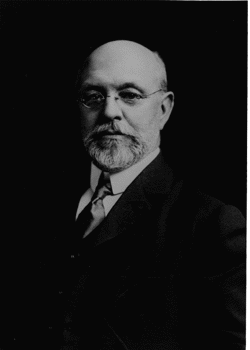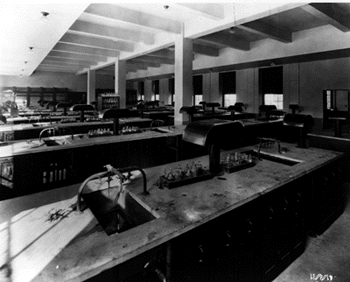|
|
Ira Remsen: The Chemistry Was RightHe arrived as department head and then succeeded Gilman as JHU's president
By James Stimpert |

This is the third of an occasional series of historical pieces that will appear in the year leading up to the 125th anniversary of the founding of Johns Hopkins. Two previous biographical sketches--on Henry Augustus Rowland and James Joseph Sylvester--can be found at www.jhu.edu/~125th.
Ira Remsen was born Feb. 10, 1846, in New York City, of Dutch and Huguenot ancestry. Following education in the public schools, he attended the College of Physicians and Surgeons, from which he received the degree of Doctor of Medicine in 1867. Although briefly a practicing physician, he had studied medicine only to please his parents. After satisfying this family obligation, Remsen left for Munich to pursue his real interest: chemistry. He spent a year in Munich and then transferred to Gottingen, where he studied under the prominent chemist Rudolph Fittig and earned his doctorate in 1870. He then followed Fittig to Tubingen, where he was an assistant for two years.
 |
| Ira Remsen |
Returning to the United States, he took a position as professor of chemistry and physics at Williams College. He found Williams unsympathetic to scientific research, so he concentrated on teaching. Shortly thereafter, he wrote Theoretical Chemistry, in which he reduced fundamental principles to a form simple enough for beginning students to understand. The book received immediate recognition and was soon translated into German and Italian. Perhaps more important, the book's success brought its author to the attention of Daniel Coit Gilman, who was searching for a candidate to occupy the chemistry chair at the opening of The Johns Hopkins University.
Although just 30 years old in 1876, Remsen had made a reputation for himself, both as a researcher and as a teacher, despite the inhospitable environment at Williams College. He jumped at the chance to equip and direct his own chemistry laboratory in Baltimore, and soon his lab became a center for chemical research, attracting graduate students who went on to become outstanding figures in later years. His instinctive teaching talents were developed and honed through experience, and it was said of him that "nobody ever understood the beginner better than Remsen." In 1879 he founded the American Chemical Journal, which he edited for 35 years, and he contributed a number of authoritative textbooks that remained standards for many years.
While working with postdoctoral colleague Constantine Fahlberg in 1878, they discovered a substance that became the artificial sweetener saccharin. Remsen had little interest in the practical application of this discovery, preferring research for the sake of advancing learning, but Fahlberg saw commercial potential and wasted little time in obtaining a patent on saccharin. Remsen did not object to his colleague's actions, but he became angry when Fahlberg tried to alter the account of the discovery. Fahlberg first omitted mention of Remsen as a participant in the research, then tried to make it appear that he, not Remsen, had been the senior investigator.
 |
| Remsen Hall: After Ira Remsen's death in March 1927, the university's trustees named the recently completed chemistry building on the Homewood campus in his honor. |
When Gilman retired from the presidency in 1901, after 25 years, the trustees turned to Ira Remsen to lead the university. He proved himself an adroit administrator, continuing Gilman's policy of judicious expansion. The undergraduate course was lengthened from three to four years, and a fund-raising drive allowed building to begin on the Homewood campus. Remsen also answered the call of President Theodore Roosevelt, heading a national referee board considering questions relating to the control of food products and their adulteration.
Ill health forced Remsen to resign from the presidency in 1912, but he recovered sufficiently to rejoin the professional world, serving as a consultant to industry. He died on March 4, 1927. Upon Remsen's death, the Hopkins trustees named the recently completed chemistry building on the Homewood campus in his honor. His ashes are interred behind a plaque in the building. During his lifetime, Remsen received a wealth of awards and honorary degrees from universities and associations in the United States and Europe.
James Stimpert, of MSEL Special Collections, is Homewood archivist. For this piece, Stimpert is indebted to former archivist Julia Morgan and Frederick H. Getman, each of whom wrote biographical sketches of Remsen, upon which this sketch is based.
| GO TO SEPTEMBER 11, 2000 TABLE OF CONTENTS. |
| GO TO THE GAZETTE HOME PAGE. |